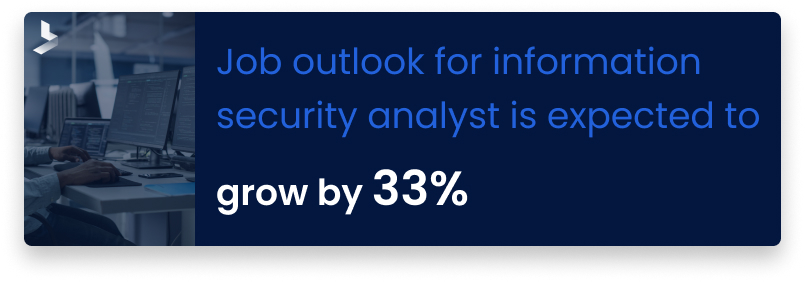XDR vs. SIEM: What's the Difference?

 By
Emily Miller
·
5 minute read
By
Emily Miller
·
5 minute read
There's a reason why the job outlook for information security analysts is expected to grow by 33% over the next decade. This intense job demand is in response to a problem facing multiple industries: cyber threats.

The good news is that there are a growing number of security tools that can be used to protect against these types of threats. Two popular ones include SIEM and XDR security.
But, what are these two types of tools? And how are XDR and SIEM platforms different from one another? If you want to learn the answers to these questions and more, then you're in the right place.
In this guide, we'll go over everything you need to know about XDR security and SIEM. That way, you can decide which one is best for your specific security needs.
What is XDR?
XDR is an acronym that refers to extended detection and response. As the name suggests, this platform both detects and responds to threats using capabilities that can extend across an entire enterprise.
Remember that losses related to cybercrime equal roughly $4.2 billion every year. And that's not even including the legal issues that can come with leaked sensitive information.
As such, many companies are turning to XDR solutions to solve these types of problems. This is a natural evolution of EDR, or endpoint detection and response, which could only collect and correlate across endpoints.
This provides it with a lot of benefits that EDR simply didn't have. First, it provides a more unified perspective. With this option, you get a view through a single pane of glass into both multiple attack angles and tools.
Next, you get faster response times from your security team.
Because they're collecting information across your networks, emails, endpoints, servers, cloud deployments, and other areas, it leads to much quicker detection bundle multiple security products together. Since you don't need to pay for these things separately, you end up saving money.
What is SIEM?
SIEM is an acronym that stands for security incident and event management. These types of applications combine the tools and services associated with security information management (or SIM) and security events management (or SEM).
SIEM platforms collect data from across the entire network. This allows analysts to more closely look over both possible incidents. Since it's pulling data on everything from hardware to network applications, it also provides a lot of visibility for when malicious activity occurs.
Because all the data is aggravating into one area, it allows security professionals to identify these threats before they're able to get in the way of business operations.
One benefit of SIEM is that it provides greater IT efficiency. Your team no longer needs to worry about going through and processing events and log data.
This gives them time to devote to other areas of your security. SIEM platforms also ensure that your business remains compliant when it comes to laws and regulations regarding privacy and data protection.
Lastly, SIEM applications have evolved over the years to take advantage of new tech trends. Now you can find SIEM platforms that use behavioral analytics, big data, and machine learning.

| Related Reading: What is SIEM and Why is it Useful? |
XDR vs SIEM: Key Differences
Now that we know more about XDR and SIEM, we can learn some of the key differences, specifically the underlying nature of both. At its core, a SIEM platform collects, organizes, analyzes, then stores huge volumes of information.
Its primary purpose in doing so is to provide analysis, aid in data storage, and support compliance/reporting objectives. Security analytics is indeed a component of SIEM.
But, this is a feature that has been tacked to many SIEM solutions. The reality is that SIEM security tools require a lot of fine-tuning and trial/error to implement into an enterprise.
If security is just relying on SIEM, then they're usually overwhelmed by the sheer number of alerts coming from the platform. This can cause them to miss important threats when they do appear.
On top of that, SIEM is a passive analytic tool. So, while it can provide alerts, it can't actively do anything to combat the security threats. XDR, on the other hand, is more activities geared toward security analysis.
This is thanks to both AI and automation within the platform, but also the way data is stored on the platform. With SIEM software, the tools work under the assumption that all data is found inside the SIEM platform.
Meanwhile, XDR tools work with data that is stored on any platform. The result is a security system that can not only rapidly detect threats but also proactively find them before they happen.
It helps prioritize which threats are a high priority for the security team, so nothing important slips by.
That's not to say that SIEM platforms don't have a place in security or compliance reporting. They're just not as efficient as XDR solutions at cybersecurity.
| Related Reading: EDR vs. MDR vs. XDR: How They Differ and Which One is Right for You? |
Does XDR Replace SIEM?
In the last section, we talked about how XDR provides cutting-edge security features that can enhance protection. However, that doesn't mean that XDR should replace your SIEM system.
Remember that SIEM includes a lot of helpful features outside of threat detection. This includes things like:
- Compliance
- Log management
- Data analysis and management for non-threats
So, if you need something that is just threat-centric, then you can rely on just XDR. But, odds are you will have other needs that SIEM can help fulfill.
You should consider other tools as well, including SOAR, CTI, and SOC. Go with XDR vendors like BitLyft that provide a combination of these solutions.
When all of these tools work together, they fill in the gaps and provide the most comprehensive IT security solution out there. Now, let's take a more in-depth look at some of the specific use cases for both XDR and SIEM.

XDR Security Use Cases
XDR can benefit a variety of industries. But let's zoom in on a couple of specific ones. The energy industry is particularly prone to ransomware attacks.
Often these attacks go under the radar until it's too late. But, XDR solutions combine threat intelligence with impressive behavioral analysis. This allows them to identify and counter any oddities that might be ransomware attacks in disguise.
Next, XDR platforms can benefit the manufacturing industry. It should come as no surprise that this industry relies on complex systems to help meet quotas. Unfortunately, all of these different avenues provide plenty of opportunities for bad actors to capture sensitive data and hold a company hostage.
However, XDR automates many aspects of incident responses through AI and machine learning. This allows it to protect complex systems like the ones found in the manufacturing industry.
Lastly, XDR can help in industries that are prone to insider threats. Remember that not all threats come from the outside. Disgruntled employees or even malicious spies can operate from within your organization.
XDR solutions give you the ability to monitor any suspicious activity that's coming from the inside. You can also implement security policies to protect you from any threats both outside and inside your organization.
SIEM Use Cases
SIEM platforms are a valuable resource for any industry that requires compliance reporting. With HIPPA compliance standards the healthcare industry is the first area that can benefit.
Specifically, SIEM systems can help monitor employee access to health records, provide data leakage protection, and monitor any changes to data policies.
If your business accepts credit cards, then you can also benefit from PCI DSS compliance or Payment Card Industry Data Security Standard. This includes things like monitoring changes to a user's credentials, detecting any unauthorized network connections, and auditing/reporting any PCI logging requirement.
Lastly, SIEM can benefit the education industry. Many high schools and universities are seeking pressure to bring on new technology to bring their learning into the digital sphere.
This is especially true after the pandemic showed how underequipped we are for remote learning. Unfortunately, this often leads to a shortage of security compliance requirements when it comes to things like:
- FERPA
- HIPPA
- PCI
- GLBA
Luckily, SIEM solutions can ensure that both students' and faculty's information is protected from the threat of cybercrime.
Ready For Protection Against Cyber Threats? Contact BitLyft
We hope this article helped you learn the difference between XDR and SIEM. Here at BitLyft, we know that cybersecurity jargon can sometimes seem like a foreign language to people outside of the industry.
However, we believe that regardless of your experience level, you still deserve access to the best cybercrime security tools out there.
That's why our team of industry experts works with you to develop a plan to keep your technology safe using XDR security. So, if you're ready for the protection that your business deserves, make sure to contact us today.
